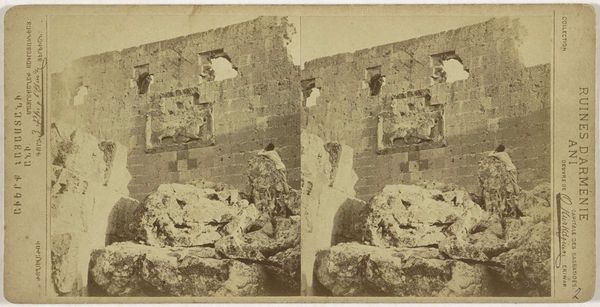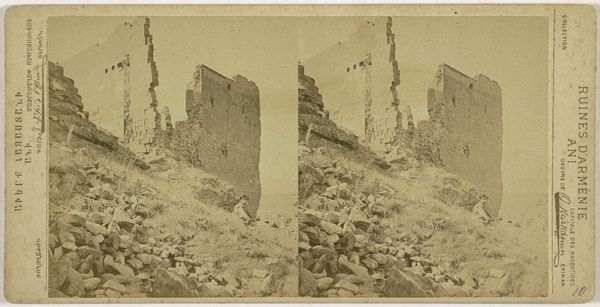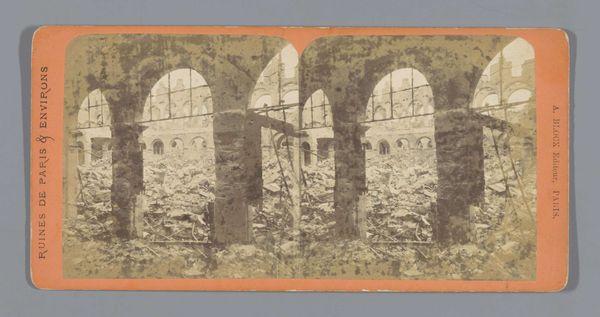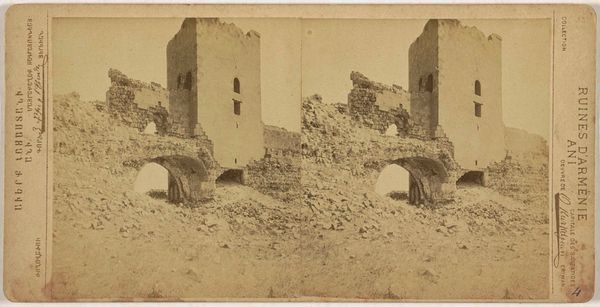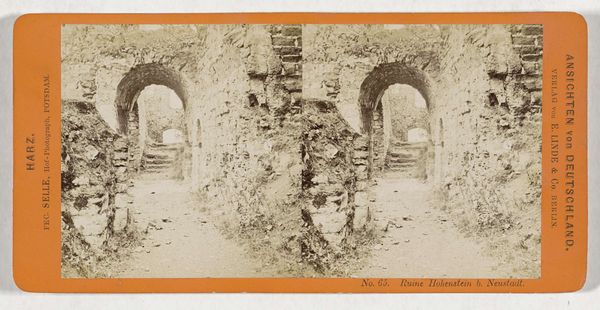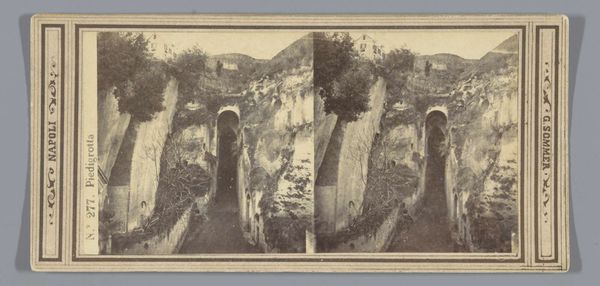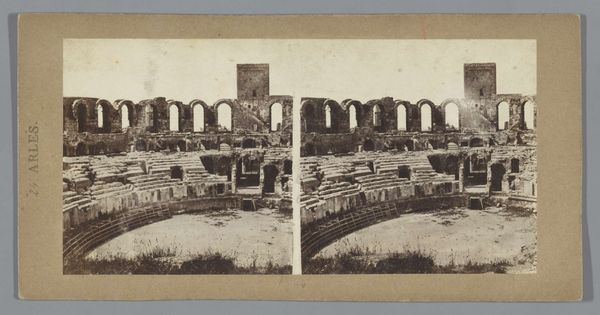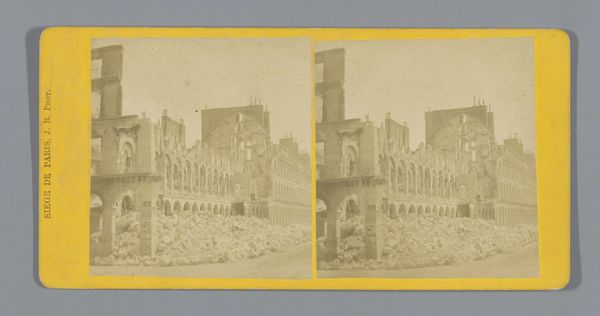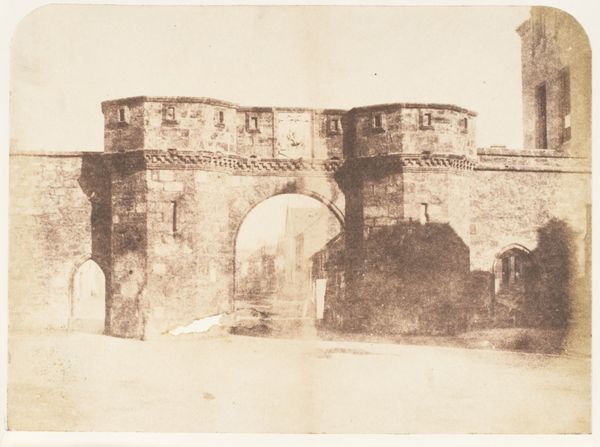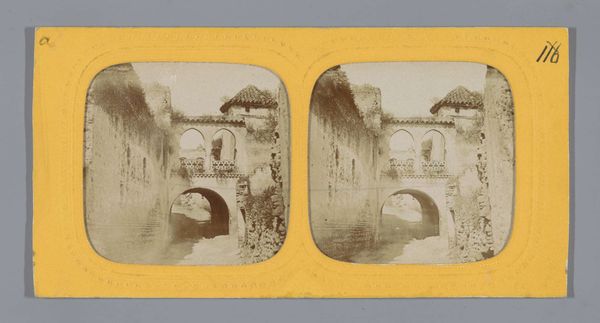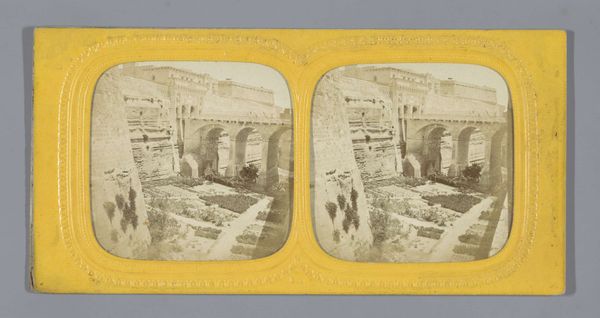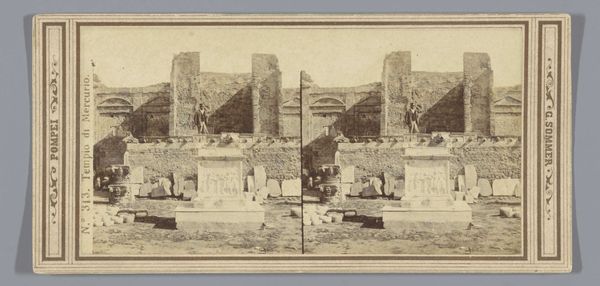
print, photography
# print
#
landscape
#
photography
#
ancient-mediterranean
#
orientalism
Dimensions: height 90 mm, width 178 mm
Copyright: Rijks Museum: Open Domain
Curator: This intriguing photographic print from between 1875 and 1880 depicts "Ruïne van de Leeuwenpoort, Ani" by Onnes Kurkdjian. Editor: My first impression is one of monumental decay, really. The stonework itself feels incredibly heavy, and the sheer volume of rubble is almost overwhelming. You can almost feel the weight of history and its collapse. Curator: Indeed. This is a significant example of Orientalist photography, showcasing the ruins of Ani, a once-great Armenian capital. Photography in this era played a key role in shaping European perceptions of the East, often emphasizing romantic views of faded empires. The choice of subject emphasizes Armenia's historical narrative within the larger scope of colonial interests in the region. Editor: It makes me consider what the stones are made of. What quarries provided the stone? How were they cut and transported? This isn't just any ruin, it's built using specific, locally-sourced materials worked by particular people, representing physical and intellectual labor now collapsed into a pile. Curator: That is precisely the kind of perspective we gain when engaging with materiality, how structures once monumental become vulnerable over time. What sort of forces, natural and socio-political contributed to such wreckage? What was once a stronghold is now literally crumbling away. Editor: Also, think about the process of producing this photographic print. What were Kurkdjian’s constraints? The materials used in early photographic processes themselves reflect a specific technological moment shaped by particular chemical industries, that capture the moment of Ani falling into ruin, creating and distributing new knowledge of these historical materials. Curator: I agree; Kurkdjian’s role as photographer then is pivotal—framing Ani’s decline in a way that catered to European tastes, turning distant locations into spectacles for a rising tourist trade. This photography also helped define emerging categories of 'art' and visual documentation and contributed to an increasing awareness of the historical conditions of Armenia. Editor: Thinking of these ruins materially brings their human and social contexts back into sharp relief; it is really about what is lost, or perhaps, about what is revealed. Curator: Absolutely, that contrast is telling. A compelling historical and aesthetic layering of Armenia's story through its visual capture by photography! Editor: Indeed, and the material processes, both the ruins themselves and their reproduction via photography offer a richer understanding of this period in Armenian history.
Comments
No comments
Be the first to comment and join the conversation on the ultimate creative platform.
